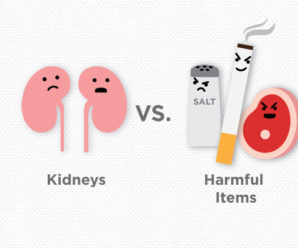Bouncing back into a routine after illness isn’t always easy. For many, bouncing back into sports or exercise is even harder.
After recovering from the COVID-19 virus, there’s no one-size-fits-all plan you can follow to return to exercise. Working with your health care provider and easing back into fitness helps ensure you have a plan that works for you and your body.

COVID-19 can take a toll on your body
COVID-19 affects everyone differently. Anyone, including young or physically-fit athletes, could experience a severe case or have long-term damage, which is why it’s so important to take this seriously.
The virus can damage the heart, brain, lungs and kidneys. Returning to high-intensity activities too soon could worsen tissue damage in these organs.
Others may experience shortness of breath, muscle aches and exhaustion long after recovering from the virus.
Dr. Chad Giles, non-operative orthopedics specialist with Marshfield Clinic Stevens Point Center, said there needs to be a waiting period between illness onset and return to sport.
“It’s 10 days since symptom onset or a positive test. You should be asymptomatic for least seven days and off all medications for COVID symptoms before you begin exercising,” said Dr. Giles. “Individuals should also be asymptomatic doing regular, daily activities and be able to walk 500 yards on flat ground without excessive fatigue or difficulty breathing.”
Dr. Giles warns of one serious complication some are facing following COVID-19: myocarditis. The condition is associated with moderate to severe cases of COVID-19 and causes inflammation of the heart. The inflammation can cause chest pain, shortness of breath and sometimes and irregular heartbeat, which may cause death.
“It’s important to pick up on cases of myocarditis early before stressing the heart more through exercise,” he said.
If you are sick with COVID-19, you should not engage in physical activity and you should focus on rest, hydration, proper nutrition and following the guidelines from your health care provider. The timeline of returning to exercise is determined by the severity of your case.
Ease back into activity
“After any prolonged break from activity or exercise, your body will need time to acclimate back to activity,” Dr. Giles said.
For most people, returning to activity will likely be slow and will require patience. Work with a health care provider to make sure you are progressing appropriately and monitor your symptoms. Do not try to power through your routine or push yourself if you notice severe signs and symptoms.
Some symptoms, like fatigue and decreased performance, may be normal when initially returning to activity. Other symptoms are more concerning and could indicate you are suffering from a serious complication of the virus.
Watch for chest pain, irregular heartbeat, lightheadedness, fainting, difficulty breathing, swelling in the legs, excessive fatigue and unusually high heart rates that do not decrease after finishing your workout.
Return to play for athletes
For athletes who need to return to play following recovery from COVID-19, residual effects of the illness can complicate medical clearance. One concern is myocarditis, which may develop even if the athlete had no noticeable symptoms. Myocarditis can be worsened by exercise during recovery, making it even more important for athletes to be cleared by a medical professional before returning to play.
For pediatric athletes, the American College of Cardiology and the Journal of the American Medical Association stress the importance of monitoring symptoms for abnormalities, which could be underlying cardiac concerns.
For pediatric patients with moderate or severe symptoms, it is recommended they are seen by their primary care provider or a cardiologist before returning to play. If the patient had severe symptoms and myocarditis is a concern, exercise should be restricted for three to six months.
For all athletes, it’s also recommended they speak to their sports medicine doctor for clearance, maintain good hydration and eat a balanced diet.
The bottom line?
“Don’t rush into activity prematurely. Be honest with yourself and your symptoms,” Dr. Giles said. “There is still a lot to learn about the COVID-19 infection and its long-term effects on the body. Even after following a return to activity progression, you should monitor for any unusual or concerning symptoms.”







Leave a Reply